Do you have a question about the HERO MotoCorp XPULSE 200T and is the answer not in the manual?
Location and format of the Vehicle Identification Number.
Location and format of the engine number.
Identifies components in the front view of the motorcycle.
Identifies components in the rear view of the motorcycle.
Identifies controls and indicators on the handlebar and dashboard.
Identifies components on the left side of the motorcycle.
Identifies components on the right side of the motorcycle.
Overall length, width, height, wheelbase, saddle height, ground clearance.
Kerb weight, payload, engine oil, fuel tank, fork oil, brake fluid capacities.
Front and rear tyre sizes and recommended pressures.
Specifications for brakes, transmission gear ratios, and electrical components.
Critical safety warnings regarding accessories and modifications.
Recommendations for preventing vehicle theft.
Key safety guidelines for riding and vehicle operation.
Helmets, eye protection, boots, gloves, and riding suits.
Recommended practices for safe riding.
Practices to avoid for safe riding.
Operation and key positions of the ignition switch.
Functions of tachometer, indicators for ABS, Neutral, Turn Signals.
Function of the mode button on the meter console.
How to adjust the hour and minute display.
Displays accumulated distance and trip distances.
Service reminder and fuel gauge indicators.
Odometer, speedometer, clock, and gear indicator display.
Current gear display and overview of navigation application.
Bluetooth connection status and mode.
How to use the vehicle's navigation feature.
Incoming call alerts and low battery warnings.
Functions of switches on the left handlebar.
Function and operation of the engine stop switch.
Function of ABS and side stand indicators/switches.
Key hole cover and fuel tank cap locking.
Function of the fuel valve in OFF, ON, and RES positions.
Operation of the seat lock mechanism.
Location and precautions for using the USB charger port.
Checks for brake fluid levels, brake pads, and tyre condition/pressure.
Checks for drive chain slack, clutch free play, and throttle operation.
Checks for lamps, horn, side stand, and engine stop switch function.
Checks for steering action, fasteners, and ABS indicator.
Procedure for starting a flooded engine.
Guidelines for the initial 500 km of vehicle use.
Basic riding procedures and gear shifting.
How ABS enhances active safety and prevents wheel lock.
ABS computer function, sensors, and indicator light.
What to avoid concerning ABS and wheel speed sensors.
Contents and location of the vehicle's tool kit.
Steps for safely parking the vehicle.
Steps for washing and cleaning the vehicle.
Why regular maintenance is essential for the vehicle.
Safety guidelines for performing maintenance tasks.
How to inspect and check the spark plug gap.
Procedure for checking and topping up engine oil.
Procedures for replacing engine oil and checking circulation.
Procedure for cleaning oil filter screen and centrifugal filter.
How to inspect the air cleaner element.
Procedure for cleaning the air cleaner drain tube.
How to adjust the idle speed.
Procedure and specifications for valve clearance adjustment.
How to adjust clutch lever free play.
Inspect the throttle cable for smooth operation.
How to operate the bystarter.
How to check drive chain slack.
Inspect drive chain and sprockets for wear and damage.
How to adjust drive chain slack.
Inspect the chain slider for wear.
Checking front and rear brake fluid levels, pads, and calipers.
Checking front forks and rear shock absorber, adjusting rear shock.
Procedure for removing and installing the front wheel.
Procedure for removing the rear wheel.
Lubricating the main and side stands.
Information on tubeless tyres and air pressure checks.
Inspecting tyre wear, damage, and replacement advice.
Location, specification, and safety precautions for the battery.
Guidelines for storing and removing the battery.
Location and procedure for replacing fuses.
Procedure for adjusting the stop lamp switch.
How to adjust the headlamp focus.
Function and importance of the catalytic converter.
Function of the air suction valve in emission control.
How the system prevents petrol vapour escape.
Steps for diagnosing engine starting issues.
Steps for diagnosing engine stalling and poor pick-up.
Diagnosing feeble horn or no light problems.
Advantages of using genuine spare parts.
Risks of using non-genuine parts for clutch, cam chain, gasket.
Risks of using non-genuine air cleaner, spark plug, brakes, chain.
Sheet for recording service history.
Sheet for recording service advice.
Location and format of the Vehicle Identification Number.
Location and format of the engine number.
Identifies components in the front view of the motorcycle.
Identifies components in the rear view of the motorcycle.
Identifies controls and indicators on the handlebar and dashboard.
Identifies components on the left side of the motorcycle.
Identifies components on the right side of the motorcycle.
Overall length, width, height, wheelbase, saddle height, ground clearance.
Kerb weight, payload, engine oil, fuel tank, fork oil, brake fluid capacities.
Front and rear tyre sizes and recommended pressures.
Specifications for brakes, transmission gear ratios, and electrical components.
Critical safety warnings regarding accessories and modifications.
Recommendations for preventing vehicle theft.
Key safety guidelines for riding and vehicle operation.
Helmets, eye protection, boots, gloves, and riding suits.
Recommended practices for safe riding.
Practices to avoid for safe riding.
Operation and key positions of the ignition switch.
Functions of tachometer, indicators for ABS, Neutral, Turn Signals.
Function of the mode button on the meter console.
How to adjust the hour and minute display.
Displays accumulated distance and trip distances.
Service reminder and fuel gauge indicators.
Odometer, speedometer, clock, and gear indicator display.
Current gear display and overview of navigation application.
Bluetooth connection status and mode.
How to use the vehicle's navigation feature.
Incoming call alerts and low battery warnings.
Functions of switches on the left handlebar.
Function and operation of the engine stop switch.
Function of ABS and side stand indicators/switches.
Key hole cover and fuel tank cap locking.
Function of the fuel valve in OFF, ON, and RES positions.
Operation of the seat lock mechanism.
Location and precautions for using the USB charger port.
Checks for brake fluid levels, brake pads, and tyre condition/pressure.
Checks for drive chain slack, clutch free play, and throttle operation.
Checks for lamps, horn, side stand, and engine stop switch function.
Checks for steering action, fasteners, and ABS indicator.
Procedure for starting a flooded engine.
Guidelines for the initial 500 km of vehicle use.
Basic riding procedures and gear shifting.
How ABS enhances active safety and prevents wheel lock.
ABS computer function, sensors, and indicator light.
What to avoid concerning ABS and wheel speed sensors.
Contents and location of the vehicle's tool kit.
Steps for safely parking the vehicle.
Steps for washing and cleaning the vehicle.
Why regular maintenance is essential for the vehicle.
Safety guidelines for performing maintenance tasks.
How to inspect and check the spark plug gap.
Procedure for checking and topping up engine oil.
Procedures for replacing engine oil and checking circulation.
Procedure for cleaning oil filter screen and centrifugal filter.
How to inspect the air cleaner element.
Procedure for cleaning the air cleaner drain tube.
How to adjust the idle speed.
Procedure and specifications for valve clearance adjustment.
How to adjust clutch lever free play.
Inspect the throttle cable for smooth operation.
How to operate the bystarter.
How to check drive chain slack.
Inspect drive chain and sprockets for wear and damage.
How to adjust drive chain slack.
Inspect the chain slider for wear.
Checking front and rear brake fluid levels, pads, and calipers.
Checking front forks and rear shock absorber, adjusting rear shock.
Procedure for removing and installing the front wheel.
Procedure for removing the rear wheel.
Lubricating the main and side stands.
Information on tubeless tyres and air pressure checks.
Inspecting tyre wear, damage, and replacement advice.
Location, specification, and safety precautions for the battery.
Guidelines for storing and removing the battery.
Location and procedure for replacing fuses.
Procedure for adjusting the stop lamp switch.
How to adjust the headlamp focus.
Function and importance of the catalytic converter.
Function of the air suction valve in emission control.
How the system prevents petrol vapour escape.
Steps for diagnosing engine starting issues.
Steps for diagnosing engine stalling and poor pick-up.
Diagnosing feeble horn or no light problems.
Advantages of using genuine spare parts.
Risks of using non-genuine parts for clutch, cam chain, gasket.
Risks of using non-genuine air cleaner, spark plug, brakes, chain.
Sheet for recording service history.
Sheet for recording service advice.
| Displacement | 199.6 cc |
|---|---|
| Fuel System | Fuel Injection |
| Transmission | 5-speed |
| Rear Brake | 220 mm disc |
| Fuel Tank Capacity | 13 liters |
| Kerb Weight | 154 kg |
| Max Power | 19.1 PS @ 8, 000 rpm |
| Front Brake | Disc |
| Front Suspension | Telescopic forks |
| Rear Suspension | Monoshock |
| ABS | Single Channel ABS |
| Engine Type | Single Cylinder, 4-Stroke, Air-Cooled |
| Max Torque | 17.35 Nm @ 6500 rpm |
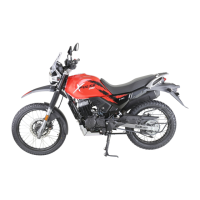
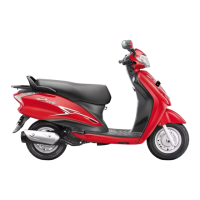
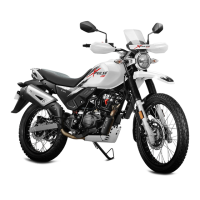

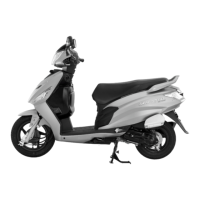
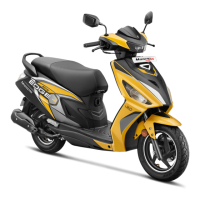
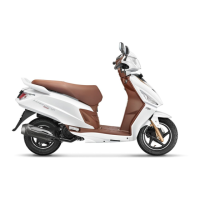
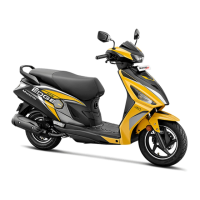
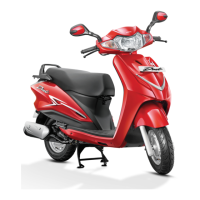
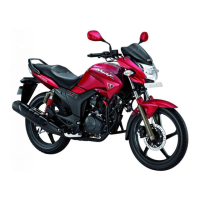
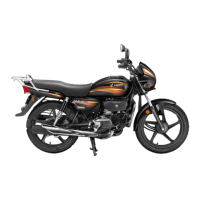
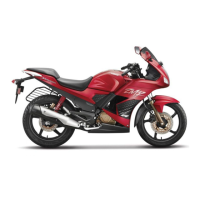
